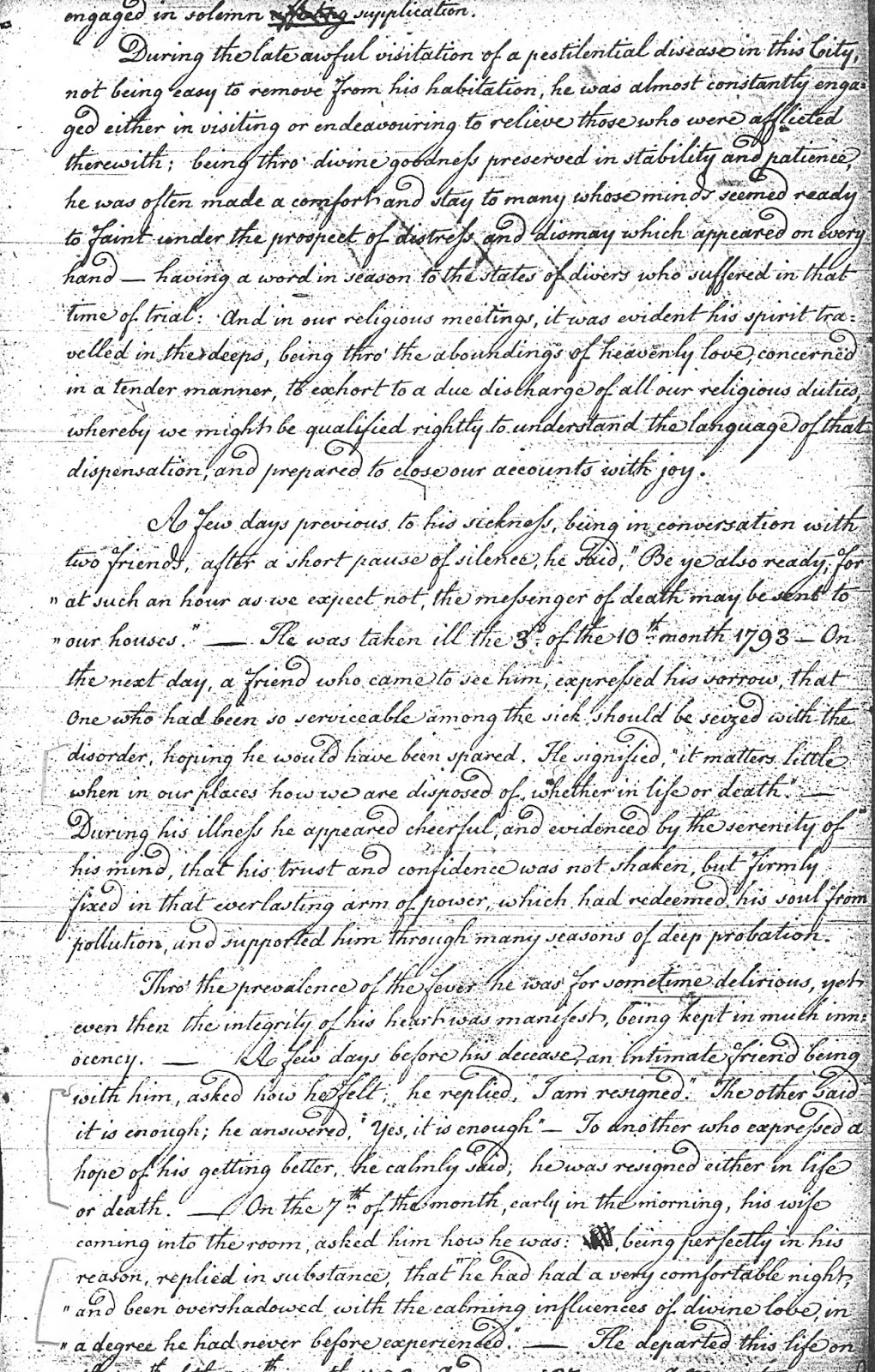Newspapers in the late 18th century were less able than today's media to reflect the current anxieties of the day. By September 7, 1793, the outlines of epidemic were evident and the first wave of panic about to begin. But the lead article in the American Daily Advertiser was a discussion of the causes of typhus by an anonymous author Araeteus, Jr. (Araeteus was a celebrated Ancient Greek doctor.) However, it was apropos in this sense: it sought to prove that putrefaction making the air impure caused typhus. Benjamin Rush would soon argue that yellow fever took hold in the city in the same way.
On the same page as the letter of Araeteus, Jr., is a report from Charleston, South Carolina, on the aid that city was giving to refugees from Santa Domingo who had just landed in the city. Modern historians generally blame those refugees for bringing yellow fever to Philadelphia. This article reminds us that refugees went to other American ports but only Philadelphia had a yellow fever epidemic in 1793.
Be sure to scroll down to the large images of the newspaper.
Monday, February 29, 2016
Independent Gazetteer August 17
Just prior to the outbreak of the Philadelphia yellow fever epidemic, the weekly Independent Gazetteer shared a report on an outbreak of "flux" in the vicinity of Georgetown, Maryland, (soon to be part of the District of Columbia.) The report suggested up to 500 people had died. The flux was most likely dysentery. The report of the disease came with suggested remedies for it. This was characteristic of how diseases were reported in the 1790s.
Tuesday, February 23, 2016
The Quakers' Anti-Vice Petition
When the Pennsylvania legislature met after the epidemic ended, the Quakers tried to make banning plays its first order of business. The petition below was widely circulated but failed to persuade the legislature.
Henry Kuhl, Treasury Department clerk
This is a letter written to the Comptroller of the Currency Oliver Wolcott, Jr.. Wolcott had moved his office outside the city but clerks had to remain in the city to continue working. This is a letter from a clerk in New York City responding to Wolcott's request that he and his fellow clerks come to Philadelphia and help prepare reports for the upcoming session of Congress in Philadelphia.
In 1793, the federal government formed under the Constitution was only 4 years old. It had moved from New York City to Philadelphia in 1791. It lacked traditions on how to respond to an epidemic.
In 1793, the federal government formed under the Constitution was only 4 years old. It had moved from New York City to Philadelphia in 1791. It lacked traditions on how to respond to an epidemic.
Daniel Offley, two letters and his obituary
Daniel Offley was one of the heroes of the epidemic who died in October after visiting the sick throughout September. In the modern retelling of the epidemic, his work is framed as part of the Mayor's Committee's effort to relieve the suffering and send the sick to the Bush Hill hospital. These letters suggest that religious principles motivated Offley. The obituary written by fellow Quakers immediately after his death suggests that Offley's preached resignation to God's will to those victims he visited. He probably did not dispense medicines or medical advice nor necessarily offer hope. He was alive to the need for money to provide for survivors and solicited funds from the wealthy banker with whom he corresponded.
Subscribe to:
Posts (Atom)




























